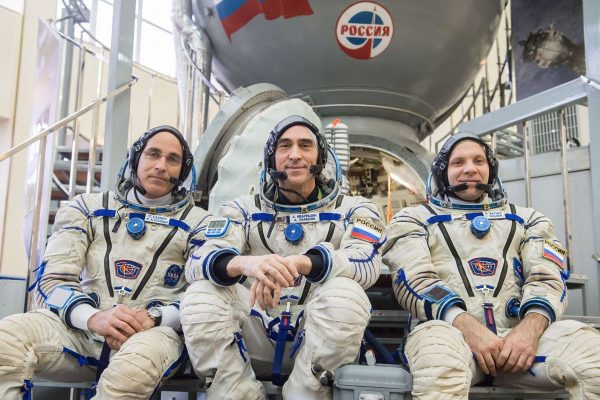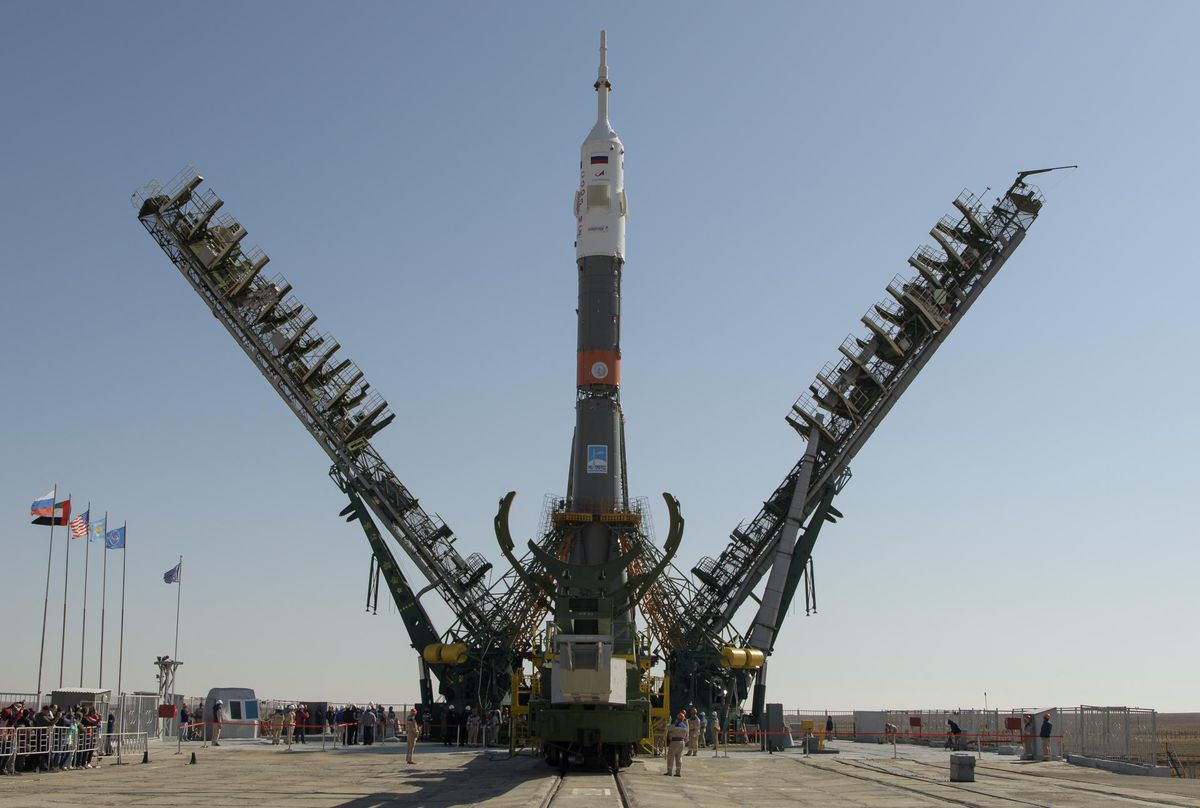
How NASA is preparing to launch humans to space as coronavirus pandemic worsens – The Verge
As the coronavirus pandemic continues to worsen in the US, NASA is still moving forward with many of its upcoming missions, including some launches that will send humans to the International Space Station in the near future. As of now, NASA does not foresee any changes being made to these missions, and there are already procedures in place to guarantee astronauts do not bring any illnesses with them into space.
NASA has its own internal “response framework” for how it plans to deal with the pandemic. It lists four different stages for the agency, which each detail the amount of people who will work from home, the level of access to NASA facilities, and how much travel will be allowed. Right now, two NASA centers — Ames Research Center and Marshall Space Flight Center — are on Stage 3, which makes telework mandatory and only allows “mission-essential” personnel on site at facilities. NASA bumped these two centers to Stage 3 after employees tested positive for COVID-19 at each place.
NASA’s Johnson Space Center, which oversees the agency’s human spaceflight launches and operates the International Space Station, is only at Stage 2. At that level, teleworking is strongly encouraged, though not mandatory, while various facilities are closed down. “The health and safety of NASA’s workforce is the agency’s top priority. As the coronavirus (COVID-19) concern continues to escalate, NASA is taking steps to ensure its workforce is protected and informed,” a NASA spokesperson at JSC said in a statement.
But as more workers at JSC stay home, they’re still looking ahead to the next launch of people to the ISS, which is slated for April 9th out of Kazakhstan. A Russian Soyuz rocket will launch three crew members, including NASA astronaut Chris Cassidy, to the station, where they’ll join three people already in orbit.
That launch is still on, and NASA says the agency hasn’t made any changes to operations and schedule surrounding the mission. As of yesterday, Kazakhstan effectively closed its borders after reporting its first coronavirus cases in the country. No one can enter the country except for diplomats, returning citizens, and those invited by the country’s government, according to Reuters. NASA is still assessing if changes are needed regarding how personnel will travel to Kazakhstan.

Of course, the concern is that the astronauts flying to the station could carry the coronavirus with them, if they don’t know that they’re infected with the virus. But NASA already has a long-held strategy in place for preventing astronauts from carrying any nasty bugs with them to space. All astronauts going to orbit must go through a two-week period of quarantine called “health stabilization,” according to NASA. That way, the agency can make sure the crew is not incubating any illnesses before launch. However, NASA said it “will continue to evaluate and augment this plan, in coordination with its international and commercial partners” if needed.
In the meantime, Russia’s state space corporation, Roscosmos, has decided to shut down all media activity surrounding the Soyuz launch, barring journalists from covering the mission in person. Russia will still live stream the launch, and NASA typically airs all of its crewed launches on its own online TV channel.
Once this launch is over, the next big milestone for JSC is the return of crew from the ISS. NASA astronauts Andrew Morgan, Jessica Meir, and Russian cosmonaut Oleg Skripochka are slated to return to Earth in a Soyuz capsule in mid-April, landing in the Kazakhstan desert. Such landings typically require large groups of recovery personnel to extract the astronauts from the landed capsule. NASA did not provide any details if those operations would change in light of the pandemic.
However, NASA has more than one upcoming crewed mission on its calendar. Soon, NASA’s commercial partner SpaceX will be ready to send its first crew of NASA astronauts to the International Space Station. The launch is a critical one for NASA’s Commercial Crew Program, an initiative to develop privately funded vehicles to transport people to and from the ISS. SpaceX has been developing its Crew Dragon capsule for the program, and the first vehicle that will fly a crew of two to the station is already in Florida ahead of its inaugural flight.
SpaceX is currently targeting May for that flight, according to the company’s president Gwynne Shotwell. NASA also says that SpaceX’s passengers for the mission, astronauts Bob Behnken and Doug Hurley, are continuing to train for the mission as originally planned. As for operations at SpaceX, it seems like things are still moving ahead as usual. SpaceX CEO Elon Musk sent an email last week to the company’s employees underplaying the coronavirus threat, arguing people were more likely to die in a car crash than from the virus.
Of course, the situations at NASA and SpaceX are subject to change quickly. The coronavirus pandemic is ever-evolving, with cities, states, and countries making swift changes every few hours to combat the spread of the disease. And already, launches are being affected. Europe’s primary spaceport in French Guiana, South America is suspending all launches from the site for the foreseeable future, in order to protect the health of employees and people in the area.
It’s possible that upcoming launches from the US could be postponed as well. It just depends on how companies plan to react and if governments take even more decisive action.






